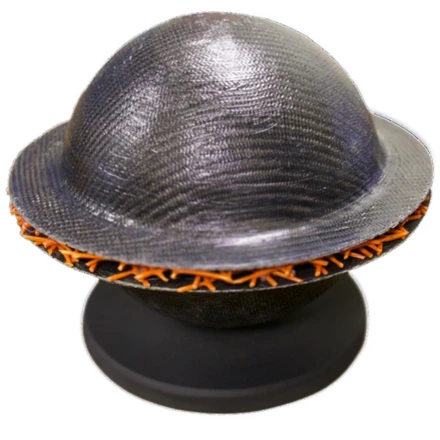Although helmets are required for many sports, Canadian materials engineering technologist Albert Beyer believes that they don't provide enough protection to the back of the head. His solution to that problem is a "crumple zone for helmets" known as the DCLR8.
According to American Medical Association statistics for 2014 , 68% of sports-related concussions are caused by impacts to the back of the athlete's head. And while conventional helmets do lessen the effect of such rear impacts, Beyer says they don't do a good enough job at it.
That's where the DCLR8 comes in.
Mounted on the back of pretty much any kind of third-party helmet (although certainly designed with hockey in mind), the device consists of two parts: the adhesive-backed mount and the impact-absorbing "egg."

The latter component is made up of two carbon fiber bowl-shaped halves, joined together to form a semi-flattened sphere. Vent holes along the seam between the two halves allow trapped air to quickly escape as the sphere collapses, ensuring that it does so within milliseconds.
The idea is that when the user receives an impact to the back of their head – such as when they fall backward onto the ice – the egg will absorb much of the energy and divert it out to the sides, keeping it from traveling through to the head. The egg will crumple in the process, but it can easily be replaced within the existing reusable holder.
In drop tests performed at the University of Alberta, use of the DCLR8 was reportedly found to reduce peak forces by 70%. The device additionally increased the duration of impacts by 100%, reducing their intensity by dragging them out over a longer time period (16.6 milliseconds on average).

"We're not going to solve the problem of reducing impact on the inside of the helmet, with just a hard shell and a liner," Beyer told us. "By going to the outside of the helmet, we did 70% better."
Should you be interested in buying a setup for yourself, the DCLR8 is currently the subject of an Indiegogo campaign. Assuming it reaches production, a pledge of CAD$50 (about US$37) will get you one. The planned retail price is CAD$64 (US$48) – replacement eggs should sell for around $5. Beyer is also open to inquiries from manufacturers who wish to build the technology into their helmets.
The DCLR8 is demonstrated in the video below.




